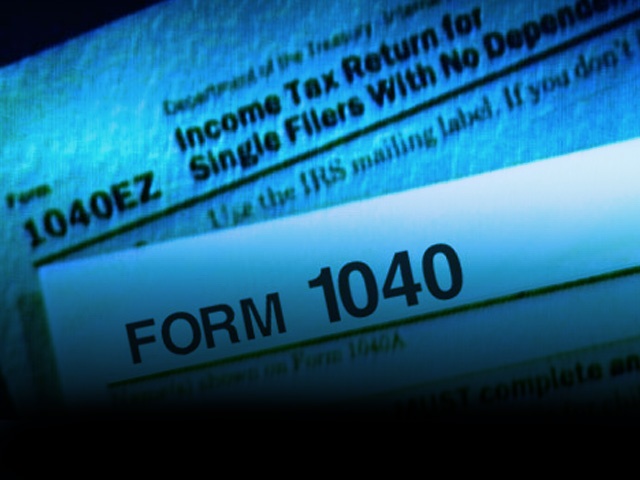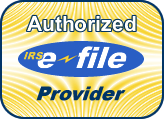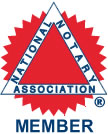Last-Minute Tax Deductions for 2011
 With tax day just around the corner, here are some ideas that can maximize your tax returns this year:
With tax day just around the corner, here are some ideas that can maximize your tax returns this year:
Invest more money in your retirement account – Your retirement funds actually aren’t taxed until that money is taken out of your retirement account. Contributions to retirement funds can be made as late as April 15th, and the taxable limits for 2011 are $5,000 for an IRA (this does not include catch-up contributions for those 50+) and $16,500 for a 401(k). Not only will you be saving money on your taxes this year, but you’ll be bolstering your retirement fund for the future.
Make charitable donations – Although you can only deduct donations given in the taxable year of 2010, now is the time to pull out those receipts and bank statements. If you haven’t been keeping track of the charitable donations you make in a year, remember to keep your receipts next time, or ask for Tax ID numbers. Not only do monetary charitable donations count: old clothes, books, furniture, appliances, and other odds given to charitable organizations qualify as deductions, too – to the benefit of your community! If you have any property that has appreciated in value from the point you bought it, donating it can let you deduct more than you originally paid. Using a simple tax calculator online can give you an estimation of the impact your donations have on your overall tax refund.
Consider a Roth account – While you don’t get a tax break when you put money into a Roth, the money you invest gets to grow tax-free as long as the account is open. Regardless of rising tax rates in the future, you have a haven to place your money where it can still accumulate growth.
Write off the interest on your student loans – That’s right. If you have qualified loans out for the purpose of pursuing higher education, you can get up to $2,500 in deductions towards paying off the interest on your loans. This type of deduction is not an itemized deduction, but it is used to calculate your AGI.
Casualty and Theft Loss – If you and your family were the victims of a natural disaster, theft, or even a car accident, it’s possible to get up to $100 back per occurrence as long as they are not covered by your insurance. A few examples include the loss of a bank account due to the fault of your bank; fire, flood and storm damage, including hurricanes and tornadoes, and even the replacement cost of trees and shrubs damaged in fires or storms.
There are numerous options to help you optimize your tax returns this year. Make sure you are getting back money wherever you qualify for it, and be mindful of the smartest ways to invest your money for the future.
Olivia Mungal is an award-winning writer with pieces of her work archived in the Library of Congress. With a background in Law, she tackles convoluted economic issues in entertaining and engaging ways.
Tax Benefits for Job Seekers
 Some people- especially these days – are polishing their resumes and attending career fairs in search of employment. If you are searching for a job this summer, you may be able to deduct some of those expenses on your tax return.
Some people- especially these days – are polishing their resumes and attending career fairs in search of employment. If you are searching for a job this summer, you may be able to deduct some of those expenses on your tax return.
Here are six things you need to know about deducting costs related to your job search.
- To deduct job search costs, the expenses must be spent on a job search in your current occupation. You may not deduct expenses related to looking for a job in a new occupation.
- You can deduct employment and outplacement agency fees you pay while looking for a job in your present occupation. If your employer pays you back in a later year for employment agency fees, you must include the amount you receive in your gross income up to the amount of your tax benefit in the earlier year.
- You can deduct amounts you spend for preparing and mailing copies of a resume to prospective employers as long as you are looking for a new job in your present occupation.
- If you travel to an area to look for a new job in your present occupation, you may be able to deduct travel expenses to and from the area. You can only deduct the travel expenses if the trip is primarily to look for a new job. The amount of time you spend on personal activity compared to the time spent looking for work is important in determining whether the trip is primarily personal or is related to your job search. (If you have questions about how to figure this, call us.)
- You cannot deduct job search expenses if there was a substantial break between the end of your last job and the time you begin looking for a new one.
- You cannot deduct job search expenses if you are looking for a job for the first time.
Where to Learn About Job Openings
- Personal contacts
- School career planning and placement offices
- Employers
- Classified ads:
- National and local newspapers
- Professional journals
- Trade magazines
- Internet resources
- Professional associations
- Labor unions
- State employment service offices
- Federal Government
- Community agencies
- Private employment agencies and career consultants
- Internships
Here are some job-seeking goals:
- 3 prospects per-day
- 4 phone calls each morning
- 10 resumes sent out each week
- 4 informational interviews per-week
- 3 interviews per-month
Five Important Facts about Dependents and Exemptions
When you prepare to file your 2009 tax return, there are two things that will factor into your tax situation: dependents and exemptions. Here, the IRS gives you five important facts that you should know about dependents and exemptions before you file your 2009 tax return.
- If someone else claims you as a dependent, you may still be required to file your own tax return. Whether or not you must file a return depends on several factors, including the amount of your unearned, earned or gross income, your marital status, any special taxes you owe and, any advance Earned Income Tax Credit payments you received.
- Exemptions reduce your taxable income. There are two types of exemptions: personal exemptions and exemptions for dependents. For each exemption you can deduct $3,650 on your 2009 tax return. Exemption amounts are reduced for taxpayers whose adjusted gross income is above certain levels, depending on your filing status.
- If you are a dependent, you may not claim an exemption. If someone else – such as your parent – claims you as a dependent, you may not claim your personal exemption on your own tax return.
- Your spouse is never considered your dependent. On a joint return, you may claim one exemption for yourself and one for your spouse. If you’re filing a separate return, you may claim the exemption for your spouse only if they had no gross income, are not filing a joint return, and were not the dependent of another taxpayer.
- Some people cannot be claimed as your dependent. Generally, you may not claim a married person as a dependent if they file a joint return with their spouse. Also, to claim someone as a dependent, that person must be a U.S. citizen, U.S. resident alien, U.S. national or resident of Canada or Mexico for some part of the year. There is an exception to this rule for certain adopted children. See IRS Publication 501, Exemptions, Standard Deduction, and Filing Information for additional tests to determine who can be claimed as a dependent.
For more information on exemptions, dependents and whether or not you or your dependent needs to file a tax return, see IRS Publication 501. The publication is available on IRS.gov or can be ordered by calling 800-TAX-FORM (800-829-3676).
Links:
- IRS Publication 501, Exemptions, Standard Deduction, and Filing Information
This information was provided by the IRS via IRS TAX TIP 2010-04 copied and pasted here to reach more people.
IRS Reminds Taxpayers to Take Advantage of Recovery Act Benefits
This post is straight from the IRS Newswire, an IRS e-mail service. – subscribe. No I didn’t write any of this, you can get this information sent to you directly. I copied it here for you to see.
WASHINGTON — With 2009 now half over, the Internal Revenue Service reminds taxpayers to take advantage of the numerous tax breaks made available earlier this year in the American Recovery and Reinvestment Act (ARRA).The recovery law provides tax incentives for first-time homebuyers, people purchasing new cars, those interested in making their homes more energy efficient and parents and students paying for college. But all of these incentives have expiration dates so taxpayers should take advantage of them while they can.
First-Time Homebuyer Credit
The Recovery Act extended and expanded the first-time homebuyer tax credit for 2009. Taxpayers who didn’t own a principal residence during the past three years and purchase a home this year before Dec. 1 can receive a credit of up to $8,000 on either an original or amended 2008 tax return, or a 2009 return. But the purchase must close before Dec. 1, 2009, and an eligible taxpayer cannot claim the credit until after the closing date. This credit phases out at higher income levels, and different rules apply to home purchases made in 2008.
New Vehicle Purchase Incentive
ARRA also provides a tax break to taxpayers who make qualified new vehicle purchases after Feb. 16, 2009, and before Jan. 1, 2010. Qualifying taxpayers can deduct the state and local sales and excise taxes paid on the purchase of new cars, light trucks, motor homes and motorcycles. There is no limit on the number of vehicles that may be purchased, and you may claim the deduction for taxes paid on multiple purchases. But the deduction per vehicle is limited to the tax on up to $49,500 of the purchase price of each qualifying vehicle and phases out for taxpayers at higher income levels. This deduction is available regardless of whether a taxpayer itemizes deductions on Schedule A.
Energy-Efficient Home Improvements
The Recovery Act also encourages homeowners to make their homes more energy efficient. The credit for nonbusiness energy property is increased for homeowners who make qualified energy-efficient improvements to existing homes. The law increases the rate to 30 percent of the cost of all qualifying improvements and raises the maximum credit limit to a total of $1,500 for improvements placed in service in 2009 and 2010. Qualifying improvements include the addition of insulation, energy-efficient exterior windows and energy-efficient heating and air conditioning systems.
Tax Credit for First Four Years of College
The American opportunity credit is designed to help parents and students pay part of the cost of the first four years of college. The new credit modifies the existing Hope credit for tax years 2009 and 2010, making it available to a broader range of taxpayers, including many with higher incomes and those who owe no tax. Tuition, related fees, books and other required course materials generally qualify. Many of those eligible will qualify for the maximum annual credit of $2,500 per student.
Certain Computer Technology Purchases Allowed for 529 Plans
ARRA adds computer technology to the list of college expenses (tuition, books, etc.) that can be paid for by a qualified tuition program (QTP), commonly referred to as a 529 plan. For 2009 and 2010, the law expands the definition of qualified higher education expenses to include expenses for computer technology and equipment or Internet access and related services to be used by the designated beneficiary of the QTP while enrolled at an eligible educational institution. Software designed for sports, games or hobbies does not qualify, unless it is predominantly educational in nature.
Making Work Pay and Withholding
The Making Work Pay Credit lowered tax withholding rates this year for 120 million American households. However, particular taxpayers who fall into any of the following groups should review their tax withholding rates to ensure enough tax is withheld, including multiple job holders, families in which both spouses work, workers who can be claimed as dependents by other taxpayers and pensioners. Failure to adjust your withholding could result in potentially smaller refunds or in limited instances may cause you to owe tax rather than receive a refund next year. So far in 2009, the average refund amount is $2,675, and 79 percent of all returns received a refund.
Related Information
For more on the Recovery provisions that may apply to individual taxpayers see the ARRA page on IRS.gov.
Audio Files for Podcast
Tax Breaks for 2009 & 2010: In English and in Spanish
Videos
First-Time Home Buyer Tax Credit
Home-Office Deductions
More than one million new businesses are started each year. There are more than 27.2 million small, non-farm businesses in America. Of that Include 52 percent home-based businesses and two percent franchises. Of that, 52 percent are home-based businesses. 44 percent survive at least four years, and 31 percent survive at least seven years. Twenty-four percent of all new businesses begin with no outside financing.
What this is all pointing to (in my opinion) is there are a lot of Home based businesses out there, meaning there ought to be a lot of you with a home office for that business. Good news, the expense you have there are indeed deductions. But use caution.
The IRS has a lot of material out there for you to gather information on what’s what. After and or during your reading of all this material I would suggest you find a qualified tax professional to get a more in-depth look at your particular situation.
Note:
Depending on the size and nature of your business you may also need the year-round services and guidance of a public accountant, or perhaps just an experienced bookkeeper. Obviously there is a big difference in the costs involved with a public accountant vs that of a bookkeeper or bookkeeping service. Many tax professionals offer year-round bookkeeping, accounting and payroll services for their small business clients, while others do not. You should look for a tax professional, and/or an accountant or bookkeeper, with experience in your specific type of business.
If you feel you need an accountant be aware that you do not “need” to use a “CPA”, although there are many qualified public accountants specializing in small business that happen to be “certified”, and there may be situations where a bank or creditor may require financial statements prepared by a CPA (in which case you can hire one for the specific “engagement”).
A qualified and experienced “non-certified” public accountant may be better depending on your individual situation and needs. Many states require the licensing of “non-certified” public accountants. (As a general rule, CPA firms tend to charge a higher fee than a “non-CPA” firm, sometimes substantial, and a small “non-certified” firm may provide more personalized or individualized service.)
You should make your decision on which firm or individual to use based on your specific needs and the specific training and experience of the firm or individual, and not make any false assumptions based on initials or lack thereof.
This note appreciatively provided by
tax professional, colleague, and friend,
Robert Flach The Wondering Tax Pro.
Record keeping or bookkeeping is vital. Most (especially when starting out) will forgo the paper work side of things and concentrate 100% on carrying out their business and worry about the accounting of it all later.
One of the most important things you can do for your business is keep a calendar. In the calendar write down what you did, whom you met with, where you went, how many miles you went and what you spent. Keeping accurate records will save you money with your tax professional as you have all the numbers gathered already, thus reducing their time on your bookkeeping, reducing their bill.
Okay, so what some valid home office business deduction? A valid business deduction is generally an expense that specifically relates to the production of income, or anything that is “ordinary and necessary” to maintain your business. Of course there are exceptions. For more you can take a read through the IRS Publication 587, Business Use of Your Home and the instructions for Form 8829, Expenses for Business Use of Your Home (Instructions). Below are some examples of possible home office deductions.
- Telephone
- Computers/software
- Office furniture
- General office expenses
You’ll also be able to write off some of your regular household expenses as business deductions. To be a valid deduction there are several stipulations that must be met. The business portion of your home must be used exclusively and on a regular basis
- Your principal place of business
- A place of business used to meet with clients or customers
The deductions will be based on a percentage of business space to regular living space of your home.
Example:
Your home has 2,548 total square feet of space. 253 square feet is the total amount of space you are using as your office. This will give you a deduction of about 10.13% of certain expenses.
“There are actually several way to calculate the percentage and you’ll want to consult your tax pro on what is most advantageous for you.”
Some examples of home office expenses
- Real estate taxes
- Mortgage interest
- Utilities
- Home insurance
- Snow removal
- Exterminators
- Plumbers
- Casualty losses
- Home repairs and maintenance
- Security system
- Depreciation
Also, keep track of those things that are a direct expense. Meaning if you have a repair in the home office itself that expense is direct and generally is 100% deductable.
Note:
There is no requirement that the business portion of a room be physically separated from the rest of the room by a wall, partition or other demarcation.
Please read IRS Publication 587, Exclusive Use
For other great information, please visit
The U.S. Small Business Administration site.
Other helpful post from TWTP
THREE CHEERS FOR THE HOME OFFICE DEDUCTION! – January 8, 2008
HOME OFFICE EXPENSES OF A ONE-MAN CORPORATION – December 4, 2006











